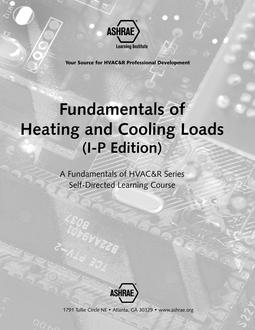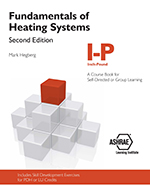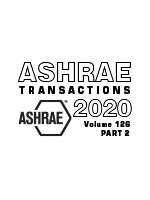
Fundamentals of Heating and Cooling Loads I-P
Covers heat transfer as it applies to buildings and the various factors that must be considered when calculating the heating and cooling loads of a building. Topics include: how to use a simple heat loss calculation procedure; how to find and use local climate data; thermal properties of building materials; effects of air infiltration and ventilation; basic concepts and methods to determine cooling loads; effects of windows, walls, roofs and partitions on loads; basic types of internal loads; how to use the CLTD Method; and how to use the Transfer Function Method.
What you will learn
You will develop an understanding of heat transfer as it applies to buildings and the various factors that must be considered when calculating the heating and cooling loads of a building. After completing the course, you should know:
- How to use a simple heat loss calculation procedure.
- How to find and use local climate data.
- The thermal properties of building materials.
- The effects of air infiltration and ventilation.
- The basic concepts and methods to determine cooling loads.
- The effects of windows, walls, roofs and partitions on loads.
- The basic types of internal loads.
- How to use the CLTD Method.
- How to use the Transfer Function Method
Course Content
Heat Transfer and Load Calculation – Conduction; convection; radiation; thermal capacitance; and sensible and latent heat transfer.
Simple Heat Loss Calculation Procedure – The basic process; example building; and useful comments.
Temperature Design Conditions and Weather Data – Inside and outside design conditions; winter outdoor design temperature; wind and annual extremes data; summer outdoor design conditions; and other sources of climatic information.
Thermal Properties of Materials – Building material properties; U-factors for non-uniform sections; surface resistance and dead-air spaces; and thermal performance among alternatives.
Heat Transfer Through Walls, Roofs and Floors -– Building description; zoning the design; unheated spaces; slab-on-grade; basement; crawlspace; dormers, gables and overhangs; and building summary.
Infiltration and Ventilation – Infiltration sources; air change method; effective leakage area method; ventilation; and humidification and moisture control.
Cooling Load Calculations – Heat flow rates; initial design consideration; and calculation methods.
Air-Conditioning Loads on Walls, Roofs and Partitions – Sol-air temperatures; CLTD for roofs; CLTD for walls; interior partitions; and sample problem.
Cooling Loads from Windows – Window gains by conduction; solar heat gains; internal and external shading devices; and example calculations.
Internal Loads – Lighting; power; appliances; people; cooling system gains; and examples.
Example Heating and Cooling Load Calculation -– Sample problem definition; initial data collection and assumptions; heating load; and cooling load.
Transfer Function Method -– Heat gain by conduction through exterior walls and roofs; conversion of cooling load from heat gain; and use of room transfer functions.
Who Should Enroll in this Course?
This is an excellent course for anyone who needs a general overview of the principles of heat transfer and heating and cooling load calculation. You will benefit from this course if you are:
A recent engineering graduate working in the HVAC&R industry.
An experienced engineer who has entered the HVAC&R field from another engineering area.
An architect, technician, construction or building management professional who wants to increase your knowledge of HVAC systems.
Participants completing this course earn 3.5 Continuing Education Units (CEUs) or 35 Professional Development Hours (PDHs).
Enrollment Fees
FUNDAMENTALS OF HEATING AND COOLING LOADS (Code 98045):
ASHRAE Member: $128
Non-Member: $150
Citation: ASHRAE Self-Directed Learning
Product Details
- Published:
- 1998
- ISBN(s):
- 9781931862301
- Number of Pages:
- 314
- File Size:
- 1 file , 23 MB
- Product Code(s):
- D-98045, 98045

